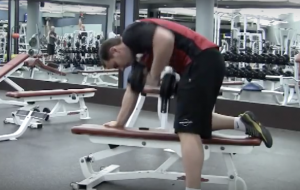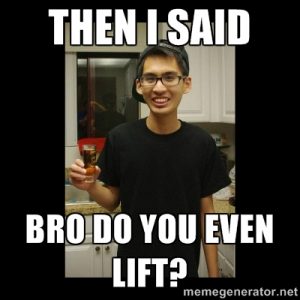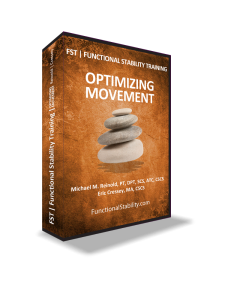Qualifying Movement as a Coach
Coaches and trainers always look to give their clients better results with programming, and much of that comes to setting them up in the best positions and situations to get the best results possible from the specific exercises being used. If I want a client to do a dumbbell row because it works their lat muscles, but the way they set up is more indicative of working the upper traps and biceps, I’m not getting the right benefit from the exercise that I’m looking for.
Now a lot of movements that might prove problematic could be somewhat more subtle that this kind of a trainwreck and a little tougher to see what’s happening. Let’s take something like a squat for example:
- is there sufficient dorsiflexion from the ankle to allow anterior tibial translation, or is the ankle locked down? Second, does the individual substitute pronation with internal rotation as a mechanism for achieving secondary dorsiflexion, which isn’t actually what you’re looking for in the first place?
- Does the knee flex and extend enough to produce the squat motion, and is there secondary rotation from valgus collapse or tibial internal rotation during the flexion movement?
- Do the hips have sufficient hip flexion range of motion before bone to bone contact that would mitigate rolling the hips under and substitute lumbar flexion for a lack of hip flexion? Is there sufficient rotational control through the hip to resist dropping into valgus collapse?
- Does the spine and core have enough control to resist shear motion during the eccentric and concentric phase of the motion to effectively transfer force from the lower body to the upper body?
- Can you get your shoulder blades into a position to hold the bar without increasing anterior humeral glide that could cause some discomfort with squat movements?
- Do your glenohumeral joints have sufficient external rotation to grab the bar?
- Do you have the wrist and elbow movement to grab the bar without laterally flexing the elbow?
- Do you even lift?
The big and easily viewed stuff is easy. That’s why everyone looks at it and it’s fairly simple to fix up. Recognizing the smaller details that affect the outcomes can be a big benefit to making someone a better coach and helping their clients get better results with fewer secondary issues along the way. Adjusting a program to take advantage of someone’s limitations, whether through previous injury, age related degenerative changes, or lack of exposure to the movement, can help them still train hard, see results, and feel awesome along the way.
Optimizing movement ability for the person in front of you can be a challenge, especially if someone has significant deviations from what would be considered “textbook” abilities. What we do know is that normal variances in anatomical structure and alignment can be pretty broad, making it more challenging to assume that an inability to do a specific movement comes down to a muscle being tight or weak. Because of this, each individuals optimal may be very different, and something that should be a consideration with their training program. Some people will never squat below parallel, and some won’t be able to deadlift off the floor. Others may never get their arms over their heads.
And that’s okay. It’s up to you as a coach or trainer to address this, and develop a plan according to their abilities.
Looking at these details is one reason why some elements such as breathing mechanics, foot and ankle motion, and thoracic mobility have become so popular in recent years. Gaining ankle dorsiflexion won’t make you add 50 lbs to your deadlift, nor will getting less apical breathing pattern dominant add 10 lbs of muscle to your frame, but they will help you to get into better positions to do the work you want to do, so that you can train hard in order to increase your deadlift and gain some muscle.
Essentially, getting into better positions to train helps you to train better – Click to Tweet that
There’s also a range in what we see in things like muscle tension or strength. In many ways, tension or stiffness can be viewed as beneficial in a lot of ways and situations, and having more range of motion or less stiffness may not be beneficial to the individual.
These reasons are some of the ones that I’m glad Eric Cressey and Mike Reinold put together the latest installment of their Functional Stability Training Series, Optimizing Movement. This series looks at some of the less commonly viewed elements of common movements, how to assess them, and then how to coach the living hell out of them. The series is divided between webinar-based lectures and hands-on labs detailing how to work with complex positions and small considerations for everything from belly breathing to deadlift set up.
The combined approach of a high level doctor of physical therapy and a strength coach who is among the best in the business means they can offer a lot of value and benefit to people who view their series. I’ve looked through each and every series they’ve put together and this is some of their best work to date.
Until June 19th, you can get the series for $30 off. It’s a deep series, so if you’re looking to get your geek on with anatomy and physiology, it’s going to provide a lot of new perspectives on how the body moves and works. If you’re seasoned in anatomy and physiology, it’s going to be a solid review and will help spark some new interest in some old favourites.
Click HERE for more info and to get your copy
It’s only on sale until June 19th, so act quickly.


